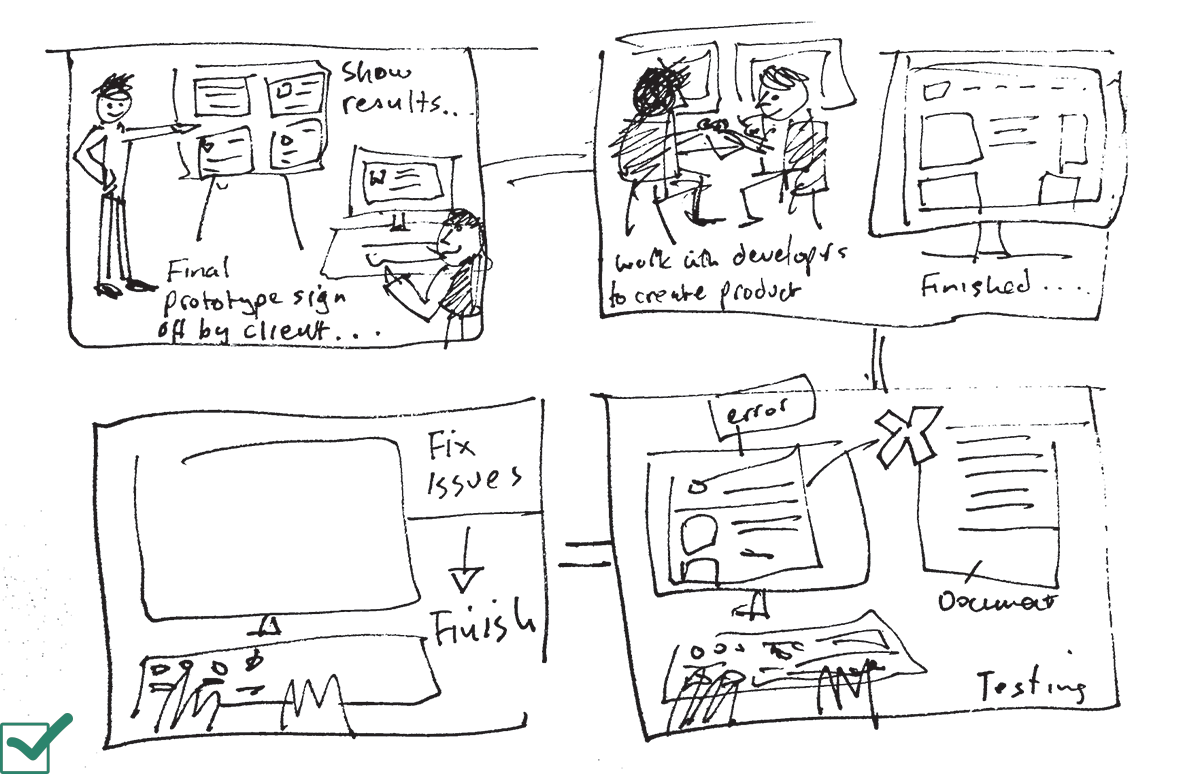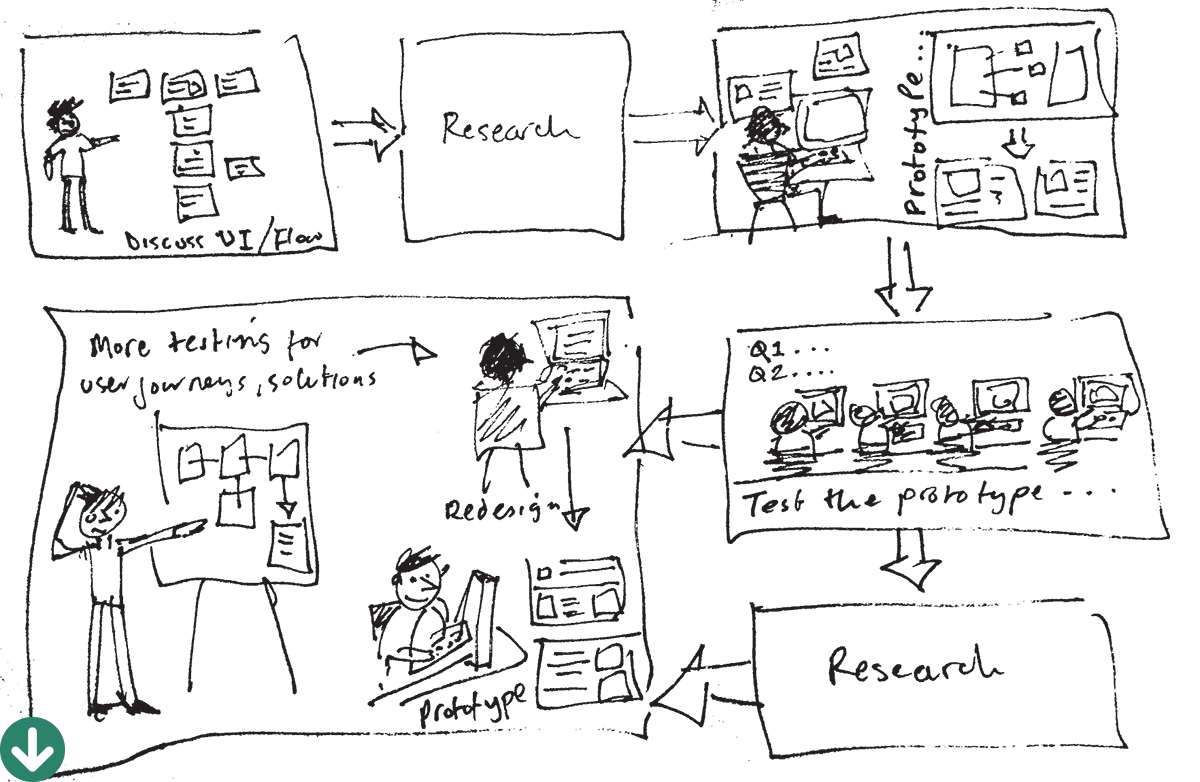
My UX Process
I follow a user-centric design approach, by keeping your business goals and objectives in alignment with the needs and expectations of your users.
I always try to work as closely as possible with my clients and teams, going through rapid cycles of research, design, feedback, refinement, and validation throughout the project. This means that there is a less long-term risk to the end product and the delivery, and also helps to make the whole experience much more enjoyable for all involved. The significant outcome of this process is a useful, usable, and successful experience for your users, but just as importantly a return on investment for your business. I have listed and sketched out the processes below to highlight the thinking and issues that can arise.
1) Discovery
Meeting with the client to discuss the brief and documenting all requirements to visualise the project, expectations, scope, and budget and to define exactly what the project benchmarks are. Establishing goals and priorities with the client at this stage is essential.
2) Research
Competition in the marketplace, understanding what technologies are available, testing existing products using surveys, screenshot surveys, day-in-life studies, card sorting, videos of usability tests, workshop sessions, user journeys, user experiences, and expectations, creating user personas and studying outputs from ethnographic research.
3) Ideate
I tend to use pen and paper for quick results and understanding with both clients and users, facilitating workshops, and focus groups also helps to have a clear vision around what we aim to do. For tools, I use Sketch & InVision for low-high fidelity wireframes, prototypes, and user interfaces. Axure for the more complex, interactive prototyping, or the Adobe Suite for everything in between. I also use Mural to collaborate with users and teams, defining service design or to demonstrate personas, storyboarding, user journey maps, business flows, and process, information hierarchies and anything else that may provide both the business (client) and the end-users with the visuals they need to ensure value in the solution.
4) Validate
At this stage, it is important not to assume that what you are creating is in fact going to work to get you to the end goal. I advise on testing the conceptual design or any proposed solution, using internal focus groups, usability testing of concepts, user interviews, day in the life diaries, user focus groups, user task scenarios, surveys, and remote video workshops.
4.1) Repeat stages 3 and possibly 2 depending on feedback from testing/validation
5) Delivery
Depending on the scope of the project and my involvement in delivering the final product myself or working with developers there are a variety of methods for delivering the detailed design and specification. Using Sketch & Invision I am able to validate designs with users and work with developers to ensure that the product is built to a pixel perfect standard. Meeting the user’s expectations and business goals.


